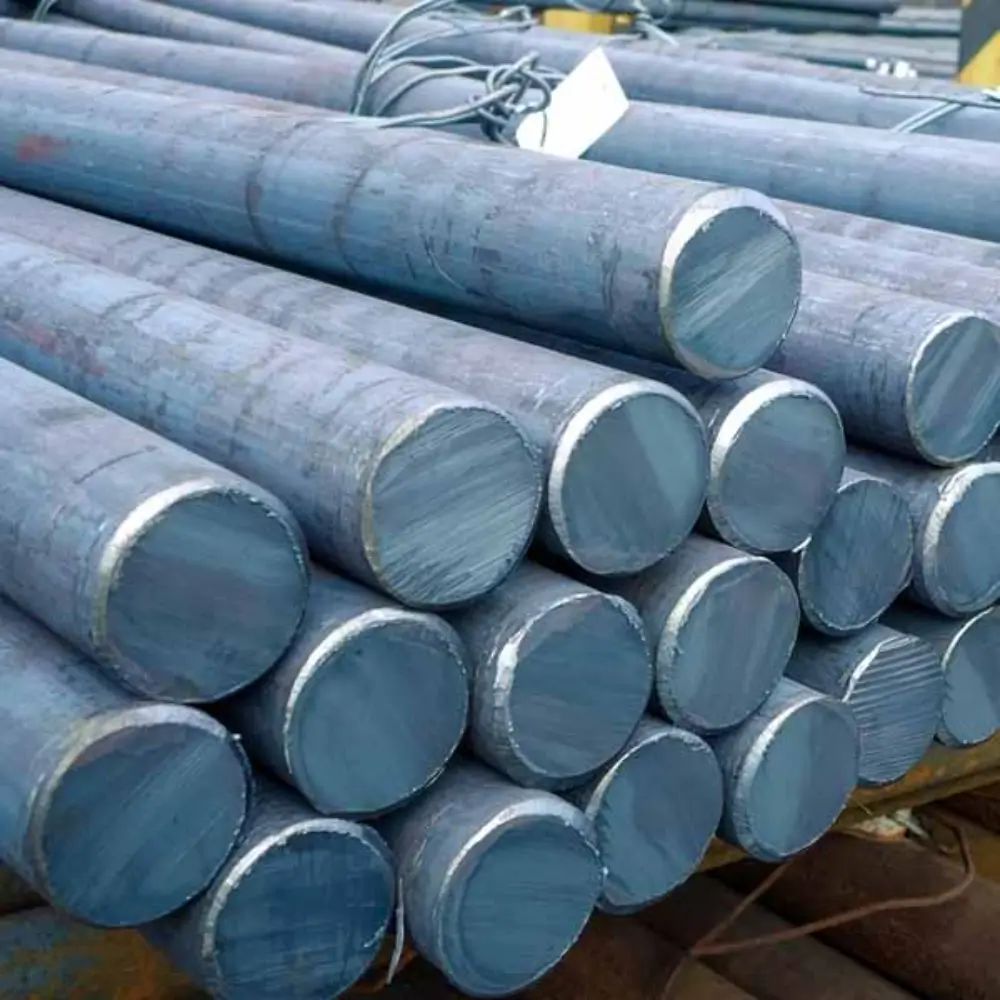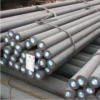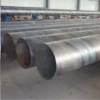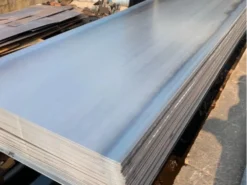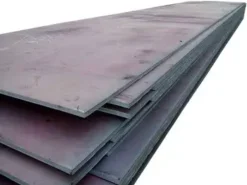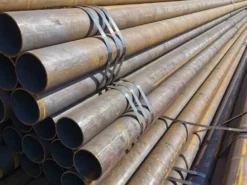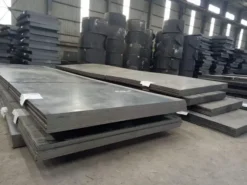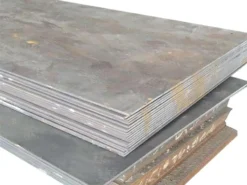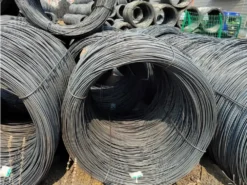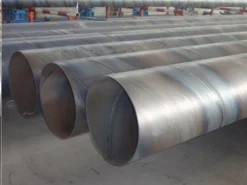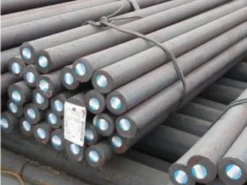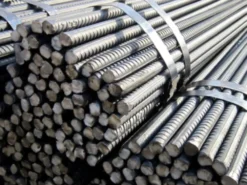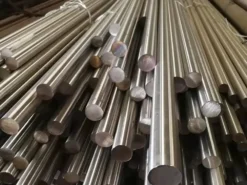Round steel bars to a solid strip of steel with a circular cross-section. Its specifications are expressed in millimeters of diameter, such as “50” indicating a round steel with a diameter of 50 millimeters.
Round steel is divided into three types: hot rolled, forged, and cold drawn. The specifications of hot-rolled round steel are 5.5-250mm. Among them, 5.5-25mm small round steel is mostly supplied in bundles of straight bars, commonly used as steel bars, bolts, and various mechanical parts; Round steel larger than 25mm is mainly used for manufacturing mechanical parts or as seamless steel pipe blanks.
Carbon steel can be divided into low carbon steel, medium carbon steel, and high carbon steel based on its chemical composition (i.e. carbon content).
(1) Mild steel
Also known as soft steel, low-carbon steel with a carbon content ranging from 0.10% to 0.30% is easy to accept various processing such as forging, welding, and cutting. It is commonly used in the manufacturing of chains, rivets, bolts, shafts, etc.
(2) Medium carbon steel
Carbon steel with a carbon content of 0.25% to 0.60%. There are various products such as killed steel, semi killed steel, and boiling steel. In addition to carbon, it can also contain a small amount of manganese (0.70%~1.20%). According to product quality, it is divided into ordinary carbon structural steel and high-quality carbon structural steel. Good thermal processing and cutting performance, but poor welding performance. The strength and hardness are higher than low-carbon steel, while the plasticity and toughness are lower than low-carbon steel. Hot rolled or cold drawn materials can be used directly without heat treatment, and can also be used after heat treatment. The quenched and tempered medium carbon steel has good comprehensive mechanical properties. The maximum hardness that can be achieved is approximately HRC55 (HB538), σ B is 600~1100MPa. Therefore, among various uses at the medium strength level, medium carbon steel has been widely used, not only as a building material, but also in the manufacturing of various mechanical parts.
(3) High carbon steel
Commonly known as tool steel, it has a carbon content ranging from 0.60% to 1.70% and can be quenched and tempered. Hammers, crowbars, etc. are made of steel with a carbon content of 0.75%; Cutting tools such as drills, taps, and reamers are made of steel with a carbon content of 0.90% to 1.00%.
According to the quality of steel, it can be divided into ordinary carbon steel and high-quality carbon steel.
(1) Ordinary carbon structural steel, also known as ordinary carbon steel, has wide limitations on carbon content, performance range, and the content of phosphorus, sulfur, and other residual elements. In China and some countries, according to the guarantee conditions for delivery, it is divided into three categories: Class A steel (Class A steel) is a steel that guarantees mechanical properties. Class B steel (Class B steel) is a steel that ensures chemical composition. Special type steel (C-type steel) is a type of steel that ensures both mechanical properties and chemical composition, and is commonly used to manufacture important structural components. The A3 steel (Class A No. 3 steel) with a carbon content of around 0.20% is the most produced and used in China, mainly used for engineering structures.
Some carbon structural steels also add trace amounts of aluminum or niobium (or other carbide forming elements) to form nitride or carbide particles to limit grain growth, strengthen the steel, and save steel. In China and some countries, in order to meet the special requirements of professional steel, the chemical composition and properties of ordinary carbon structural steel have been adjusted, resulting in the development of a series of professional steel for ordinary carbon structural steel (such as steel for bridges, buildings, steel bars, pressure vessels, etc.).
(2) Compared with ordinary carbon structural steel, high-quality carbon structural steel has a lower content of sulfur, phosphorus, and other non-metallic inclusions. According to the different carbon content and usage, this type of steel can be roughly divided into three categories: ① low-carbon steel with a carbon content of less than 0.25%, especially 08F, 08Al, etc. with a carbon content of less than 0.10%. Due to their excellent deep drawing and weldability, they are widely used in deep drawing parts such as automobiles, cans, etc. 20G is the main material for manufacturing ordinary boilers. In addition, low-carbon steel is also widely used as carburized steel in the mechanical manufacturing industry 0.25~0.60% C is medium carbon steel, mostly used in the quenched and tempered state to make parts in the mechanical manufacturing industry High carbon steel with a content greater than 0.6% C is commonly used in the manufacturing of springs, gears, rolls, etc. According to the different manganese content, it can be further divided into two steel groups: ordinary manganese content (0.25-0.8%) and higher manganese content (0.7-1.0% and 0.9-1.2%). Manganese can improve the hardenability of steel, strengthen ferrite, and increase the yield strength, tensile strength, and wear resistance of steel. Usually, “Mn” is added after the grade of steel with high manganese content, such as 15Mn and 20Mn, to distinguish it from carbon steel with normal manganese content.
Carbon Steel Bar
Welcome! Thank you for your attention to our company’s products. Our steel products are designed to meet your project needs and quality. We hope you can find satisfactory products during browsing, and let us provide you with a satisfactory purchasing experience. We look forward to providing you with quality products and services!

